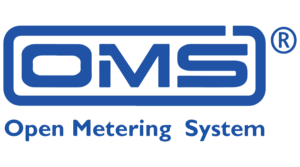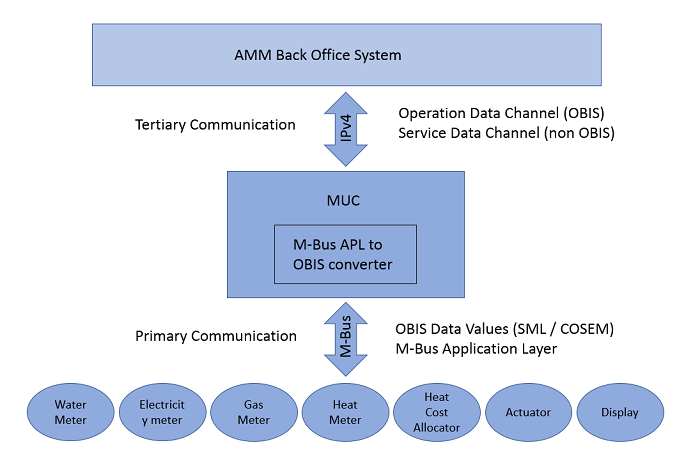OMS Technology Overview

Who is the OMS-Group?
The OMS-Group is a nonprofit association of companies using Wireless M-Bus, and has defined a set of specifications to guarantee a future-proof communication standard and interoperability between all the meter products. Radiocrafts is an active member of the OMS working groups maintaining and developing the standard.
OMS-Group Foundation and Goals
The OMS-Group was founded by Figawa, the KNX Association cvba, and ZVEI.
Today, the OMS-Group consists of over 50 members in various interest groups, such as, meter manufacturers, utilities, meter operators, electronics manufacturers, communication firms, and IT companies.
The OMS-Group have a number of working groups which were established to write the detailed specifications, consisting of members from leading meter manufacturers and communication technology providers. These working groups include:
- Primary Communication – Deals with definition of the interface for the primary communications based on the M-Bus standard EN 13757, with a focus On Wireless M-Bus: clarification, containment and enhancement of the standardized characteristics.
- Testing Norm – Deals with the definition of test specifications to achieve a certificate of interoperability based on the OMS-specification as well as development of appropriate procedures and tools for conformance tests.
- Wired M-Bus – Deals with specification of the OMS application profiles for the wired M-Bus. This includes the clarification, containment and enhancement of the standardized characteristics of the wired M-Bus.
- Marketing – Deals with marketing and promotion of the OMS Specification and the OMS-Group e. V.
- Data Transfer From OMS To Other System – Deals with specification of the data transfer from the interface OMS to the interface EN50491-11. As well as creating a test specification for a gateway to certify the data transfer.
The working groups have set various goals for themselves in order to develop the OMS standard further. These goals include:
- Initiating innovations and further developments in the OMS Standard.
- Driving for an increasingly open, manufacturer-independent standard for communications interfaces and integrating basic equipment requirements.
The desired outcome of achieving these goals is to improve the competitiveness of the OMS-Group members, and others who use the standard.
A major milestone was met in July 2009 with the release of the three-part specification.
The OMS Specifications
The specification defines a Multi Utility Communication (MUC) device, which acts like an intelligent data concentrator between the automated meter management (AMM) back office system, and the metering and actuator devices. The OMS specification is publicly available and can be realized without any patent-infringements by all interested parties.

The communication between meters and the back office is split into primary, secondary and tertiary communication.
The primary communication is between meters and the MUC. A lot of effort has been put into unifying this part to support all media, as well as actuators and displays.
The secondary communication is defined as an extension of the primary communication using simple repeaters or a multi-hop routing protocol. Proprietary solutions are allowed for the secondary communication, as no unified network protocol is specified yet. However, a simple unidirectional repeater as a range extender has been defined as part of the primary communication.
The tertiary communication is between the MUC and the back office AMM system.
Accordingly, the OMS specification consists of three documents, defining the different parts of the system: Volume 1: General Part, Volume 2: Primary Communication, and Volume 3: Tertiary Communication and MUC.
OMS Specification Communication Standard
The new specification is based on established norms and standards where it has been possible. The tertiary communication is solely based on TCP/IP, and the primary communication is based on the M-Bus standard (wired or wireless), EN 13757. This ensures that readily available equipment can be used or modified for use under the new specification.
OMS Specification Privacy and Data Integrity
In OMS, security issues were recognized as essential to achieve legal and social acceptance for smart meters. The privacy has been secured by the use of strong data encryption. The AES 128 encryption standard has been selected for the Wireless M-Bus link, and ensures privacy for the consumer by preventing unauthorised reading of meter data, as well as securing data integrity for the utility company and protection for energy theft.
OMS Specification Battery Operation
Keeping power consumption at a minimum is one of the main challenges with any device. The Wireless M-Bus standard and the OMS specification have solved this challenge by defining a protocol that requires the meter to listen for, and receive, messages only in a short period after its own transmission. After such a transmit/receive sequence the meter is allowed to sleep for 2-5 seconds. During this time the battery can “re-charge”.
Even though the OMS initiative has mainly been driven by Germany, the aim is now to integrate the OMS specification into the EN standards through the European Committee for Standardisation (CEN), to become a part of the M-Bus standard EN 13757. The TC294 technical committee has already been reassembled to undertake this task.
There are 4 generations of OMS specifications which you can review here. The fourth and most recent generation is focused on Uni & Bi-directional meters and gateways for Wireless M-Bus and Wired M-Bus. It is still under development and is to be used for all meters & gateways for countries permitting 868 MHz.
What Regions Does OMS Support?
Wireless M-Bus is being used more and more outside of Europe, even if it originally is a European standard. It was developed to be compliant with the license free bands in Europe at 868 MHz and 169 MHz. The OMS group has later defined new operating frequencies in order to comply with local frequency regulations about the world. For example, is the OMS specification covering Russia (868 MHz), India (865 MHz), Australia, New Zealand, Brazil, Middle East (433 MHz). There are also some proprietary implementations on 915 and 923 MHz for USA, Mexico and Australia.
Why use OMS Standard?
There are various reasons why one should consider using OMS compliant devices. These reasons include:

Widely Supported Proven Standard – Future Proof

Compatible and Interoperable

Free Selection of Suppliers

Long Term Reliability
Direct Communication

Improvement of Customer Loyalty
- Widely Supported Proven Standard – Future Proof – based on European norms and is supported by the industry.
- Compatible and Interoperable
- Free Selection of Suppliers – You can easily combine OMS meters from different manufacturers.
- Long-Term Reliability – The investment in the meter park retains its value in the long term.
- Direct Communication – This is possible with the specially designed meters: reading out the consumption, control of the meters, localisation of faulty meters or leakages, disconnection of meters etc.
- Improvement of Customer Loyalty – OMS meters enable the introduction of Smart Grids for the reduction of energy consumption, improved integration of renewable energies, transparent consumption, and new products and additional benefits being implemented to the standard.
Radiocrafts OMS Compliant RF modules
Wireless M-Bus is a very robust and power efficient protocol that was developed as a standardized solution for wireless meter reading (EN 13757). Key considerations were always low power for battery operations and a high level of security to meet the requirement in the meter-market. This makes the wMBUS an ideal solution for the metering application but also any Industrial application that needs a secure, robust and low power wireless connection. The use of an RF module ensures standard compliance, and the flexibility to choose between different modes and frequency bands. An RF module from Radiocrafts is always compatible with the latest additions of the standard as we take actively part in the standardization work in both CEN and OMS. Read more about our Wireless M-Bus, OMS compliant modules here.


